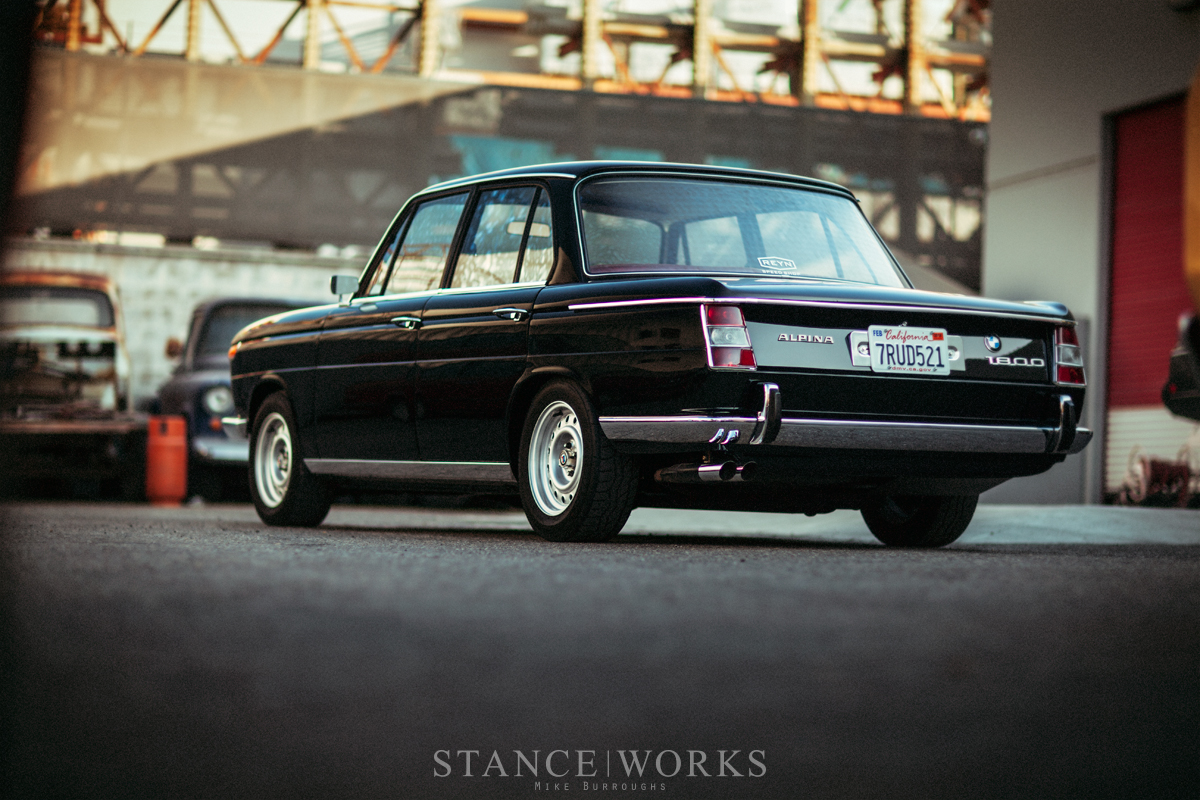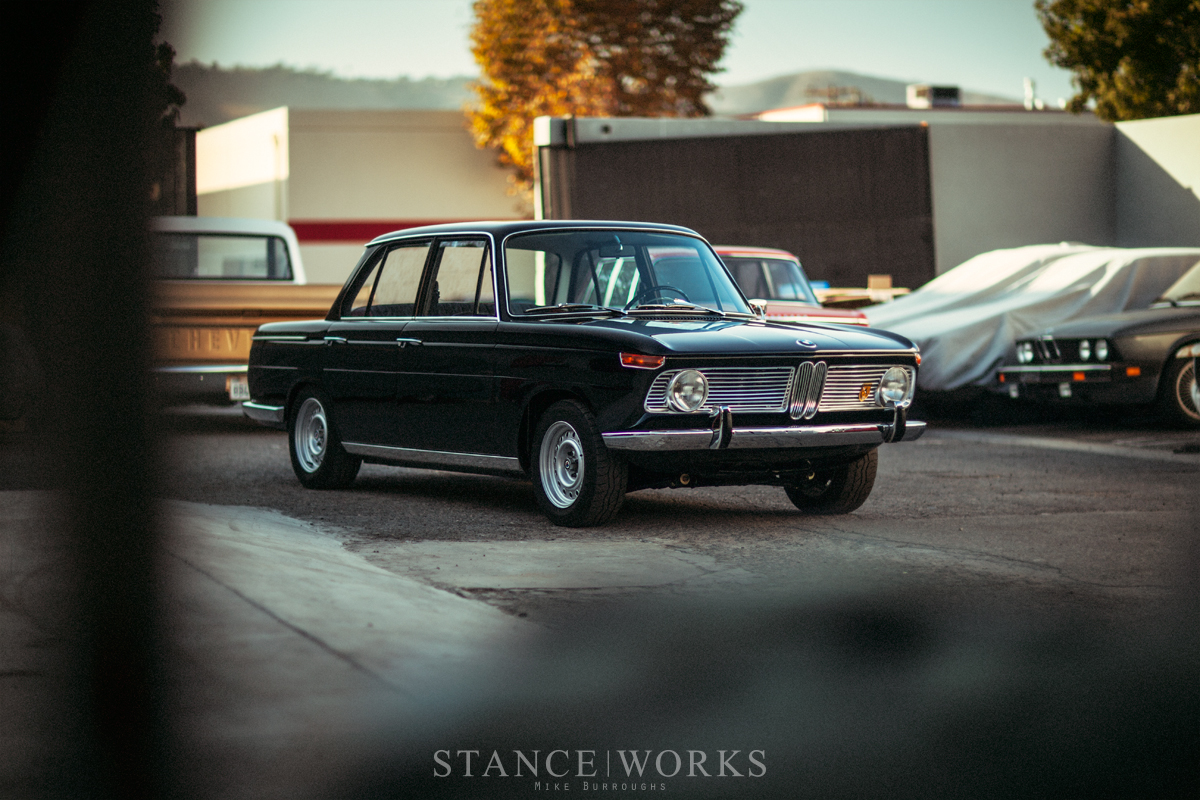
The BMW that Saved the Marque – The Collector’s 1968 1800 Neue Klasse Sedan
By the end of the 1950s, BMW was in financial shambles. The German market had turned away from motorcycles, and the marque's cars were struggling to turn a profit. The 501, 503, and 507 were simply too expensive, and the Isetta - BMW's "economy car" of the day - didn't have the margins to support the company. To bring the company back into the black would take a "hail Mary" of sorts, and luckily for us, the BMW Neue Klasse was born.


The Neue Klasse, or "NK" for short, is the predecessor to its exceedingly popular younger sibling, the 2002. Based on similar designs, it is largely a sedan counterpart to the tiny coupe, and is almost solely credited with saving BMW from financial collapse in the early 1960s.



"Neue Klasse" may need no translation, but just in case, it referred directly to the "new class" of automobiles featuring 1.5-2 liter engines, which had been absent from the marque's lineup since before World War II. Unveiled in 1961 at the Frankfurt Motor Show, the 1500 Sedan was an immediate hit. With the first iteration of what became the "M10" 4-cylinder engine under the hood, it set the precedent for performance, reliability, and with the Wilhelm Hofmeister-penned body, it set the precedent for design as well.
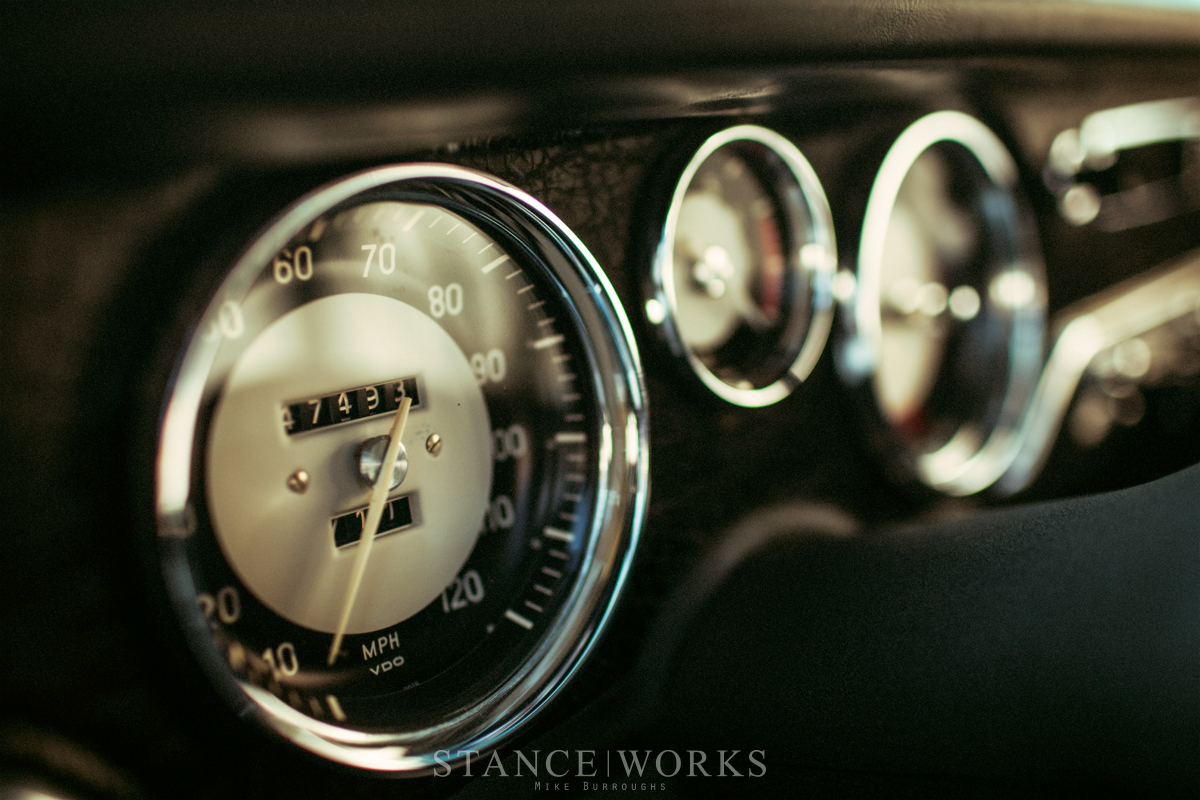
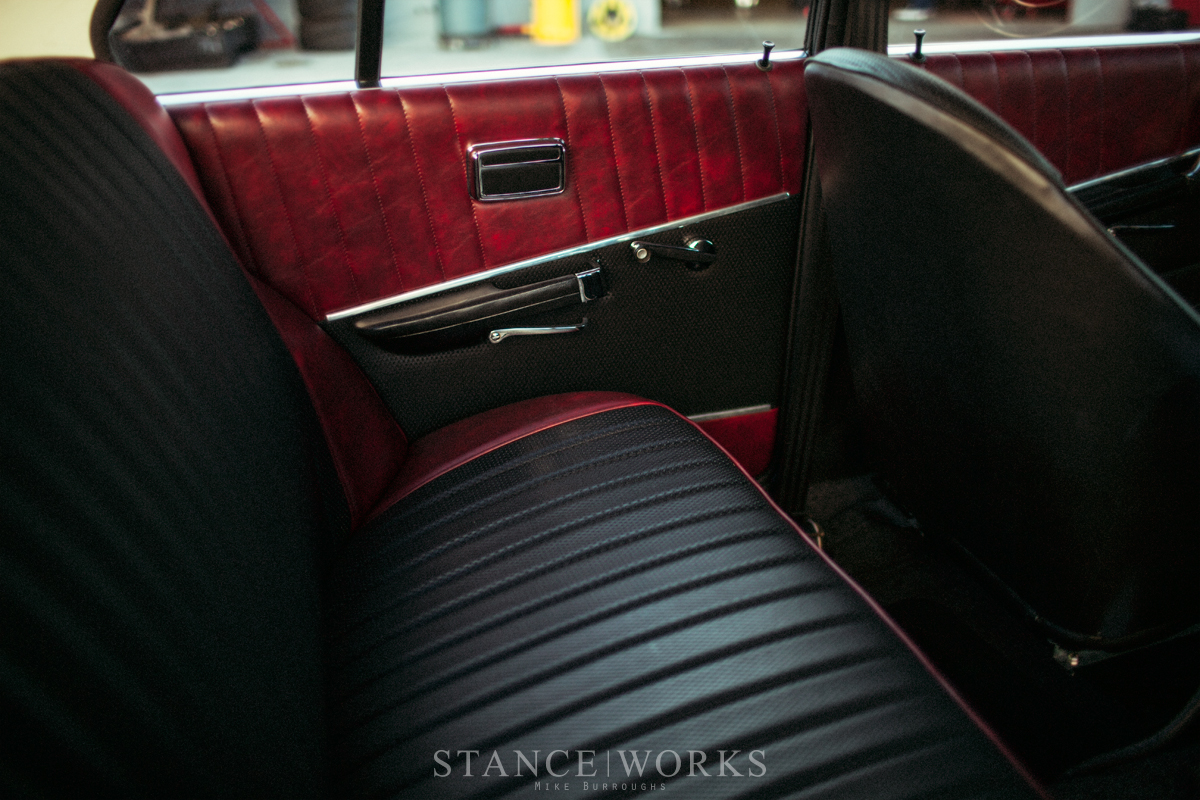
While the Neue Klass continued through the model range from 1500 to 2000, and even branched off to offer the 2000C and 2000CS coupes, there's a handful of us that agree: nothing beats the 1800. As the last model before the facelift that accompanied the 2000, it resembles its 1500 predecessor, while benefiting from a host of changes to its underpinnings after a half-decade of development. By 1968, the 1800 shared its front subframe with the 2002, and featured improved suspension geometry in comparison to its older counterparts, with parts crossing over from the 2000 Coupe, the E9 coupe, and the E10 '02s.
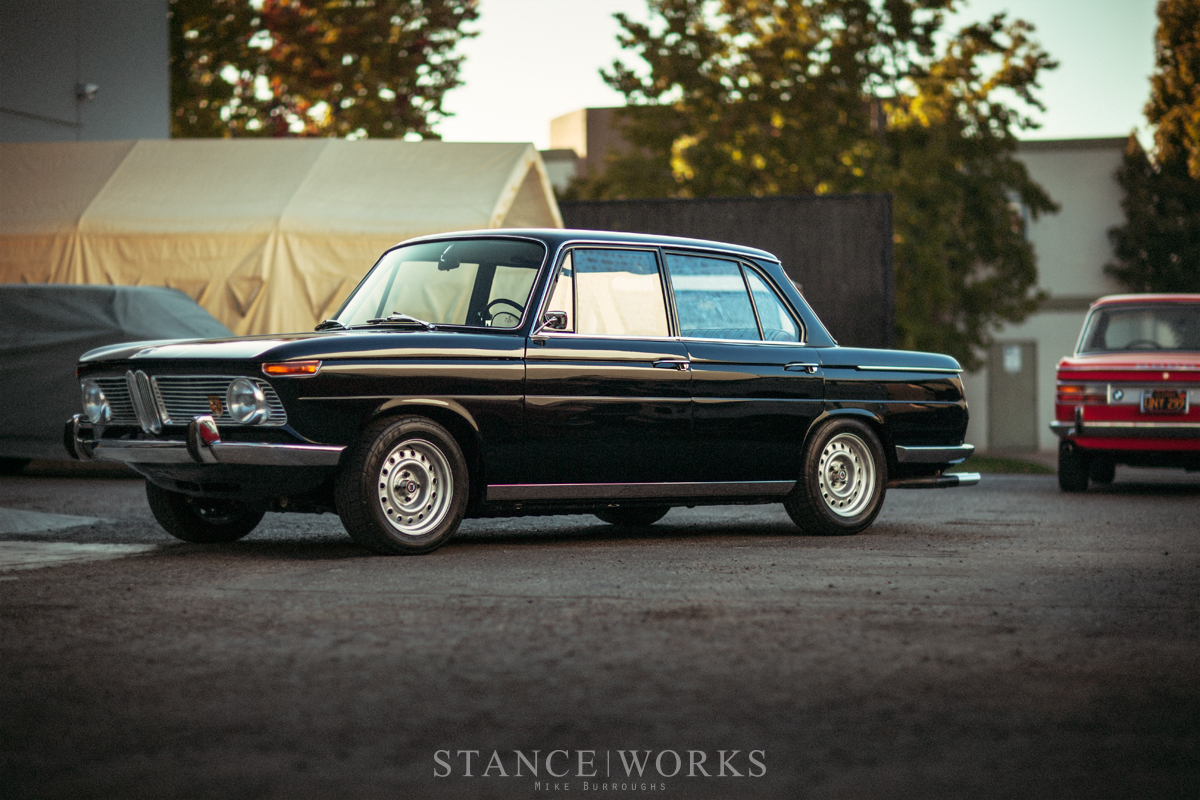

The rear subframe was altered as well, accommodating side-loading differentials as found on the E3 Bavarias, and E9s as well. While unexciting to laymen, it made for a better-driving, more robust, and more aftermarket friendly car 50 years later.


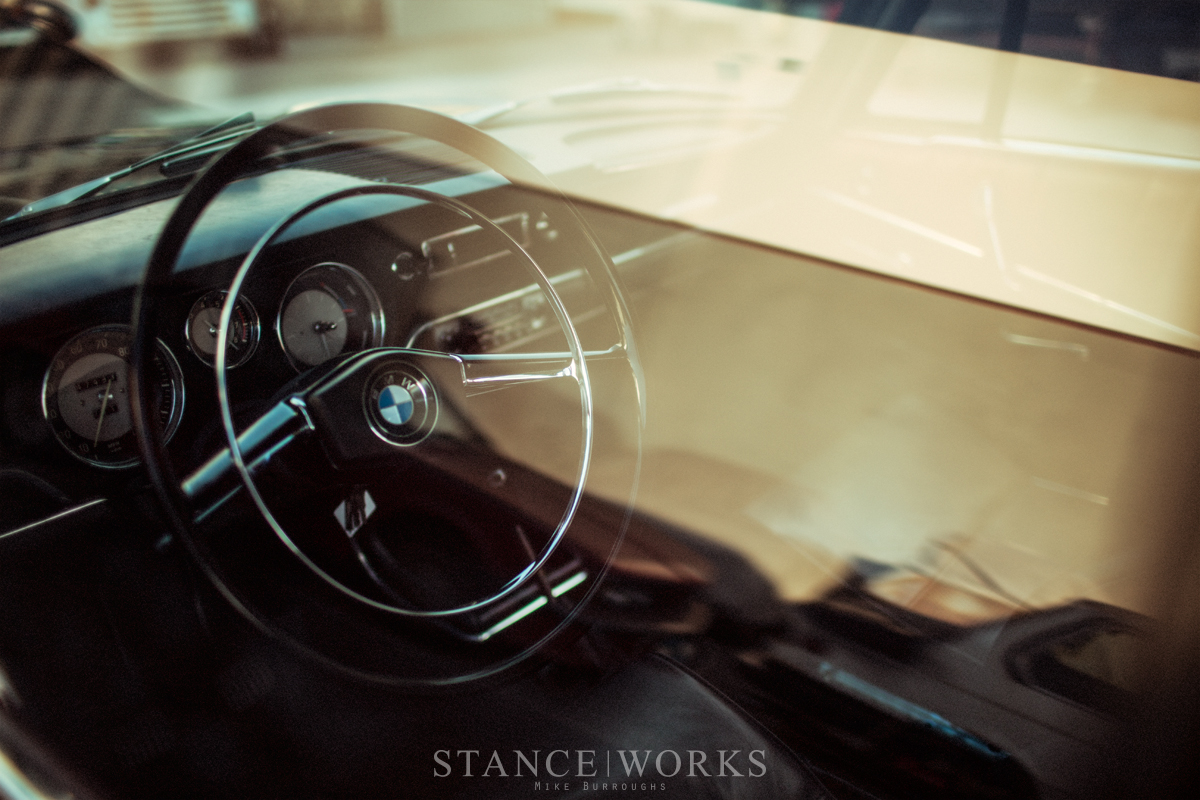
This exact car's history is foggy at best. BMW records show it as a SKD, or Semi Knock Down chassis that was delivered to Belgium in August of '67 for final assembly. As to why such an arrangement was made is unknown, but best guesses circle around possible importation tariffs and taxes on German cars at the time. Records exist for neither the car's original dealer nor the car's original paint color, meaning The Collector had some decisions to make when he embarked on the restoration project.



For The Collector, the choice was obvious: nothing beats black. 060 Schwarz Black was chosen as a period-correct sample, and was followed with subtle changes to the car's exterior to enhance its already-sleek profile. All of the car's vertical brightwork was removed, and some small trim elements were added, visually elongating the car to help it live up to the "sports sedan" moniker it helped to create.
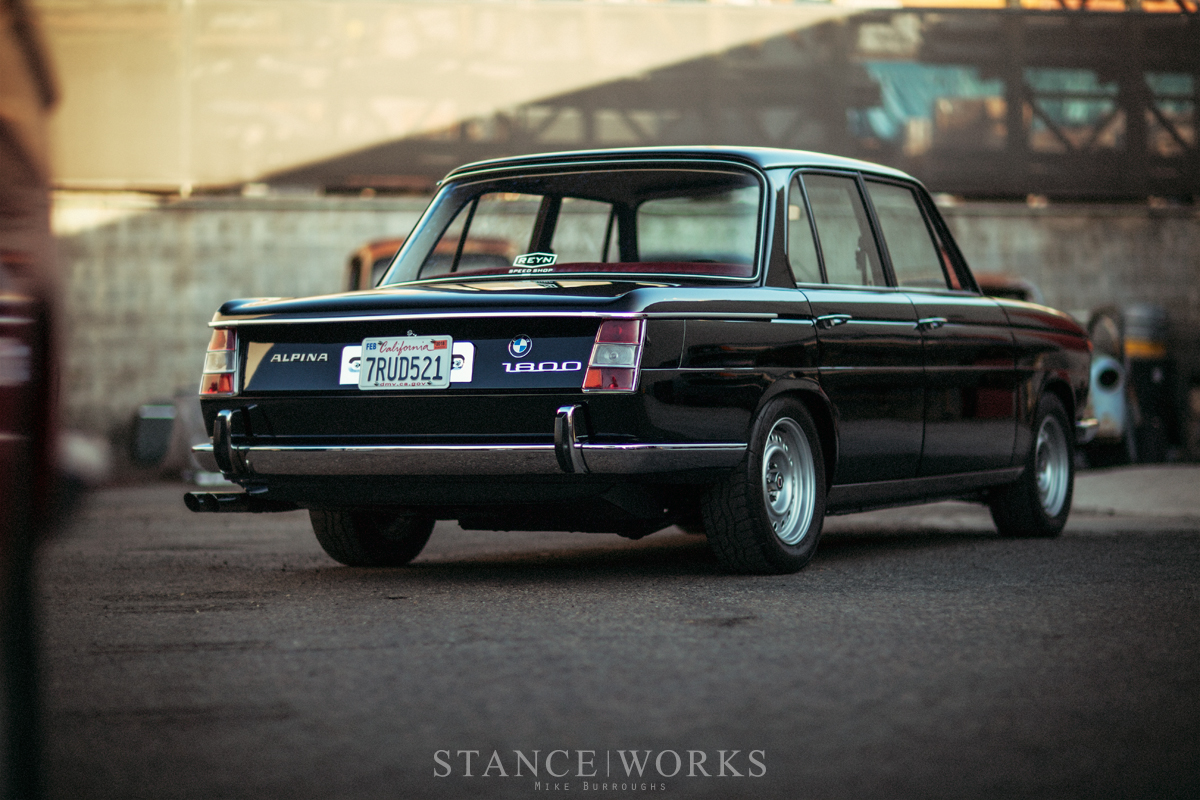
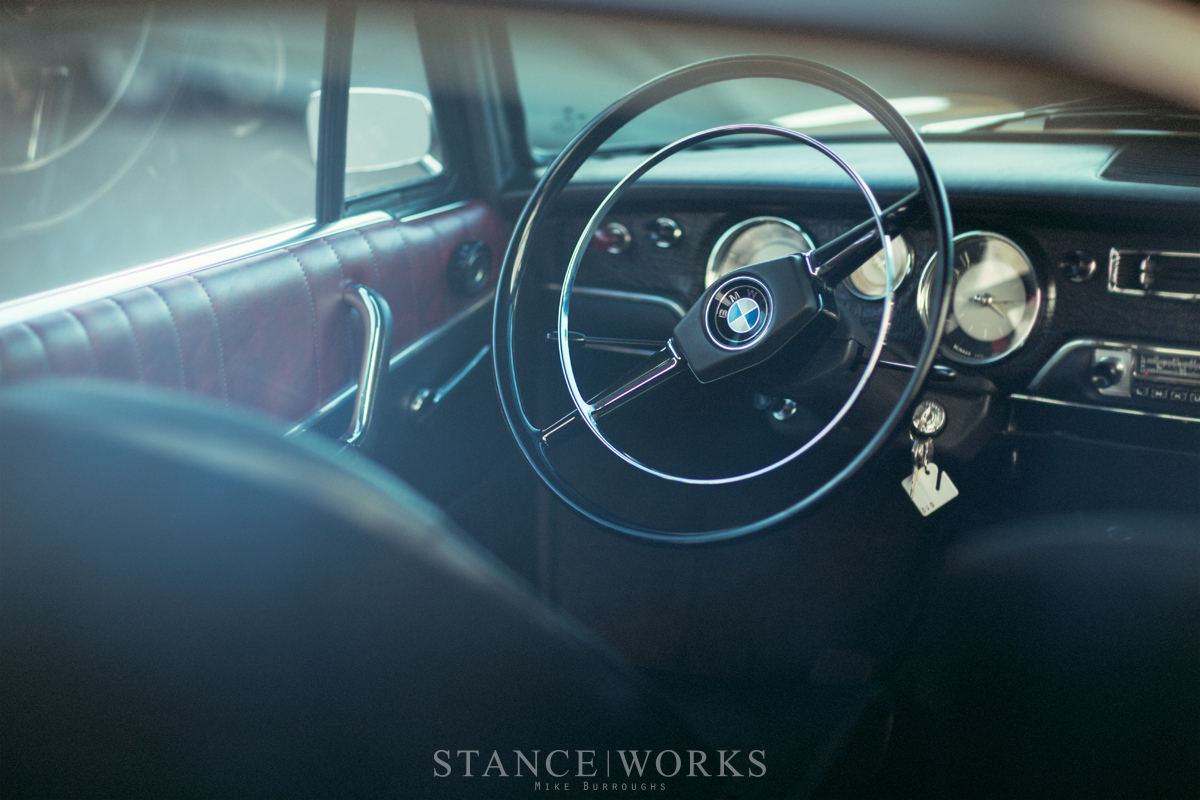
Under the hood, no holds were barred. The M10 was opened up to 2.2 liters with a 9.5:1 compression ratio, in part thanks to an S14 crankshaft. A 292 Schrick cam sits atop the motor, helping corral air through the ALPINA A2 intake and plenum, through the Borla ITBs, and into the cylinders. After the magic happens, the hot air is pumped out through an ALPINA 'bundle of snakes' header and through an Abarth exhaust. A Motec PDM30 controls a sequential coil-on-spark ignition system, and in a symphony of might and power, the entire system pumps out an astounding 225 horsepower at the flywheel. After passing the power through a 4-speed Getrag 242 and a 4.10 limited-slip ZF side-loading differential, the sporty sedan puts 165 horsepower to the ground: more than double the factory figure.

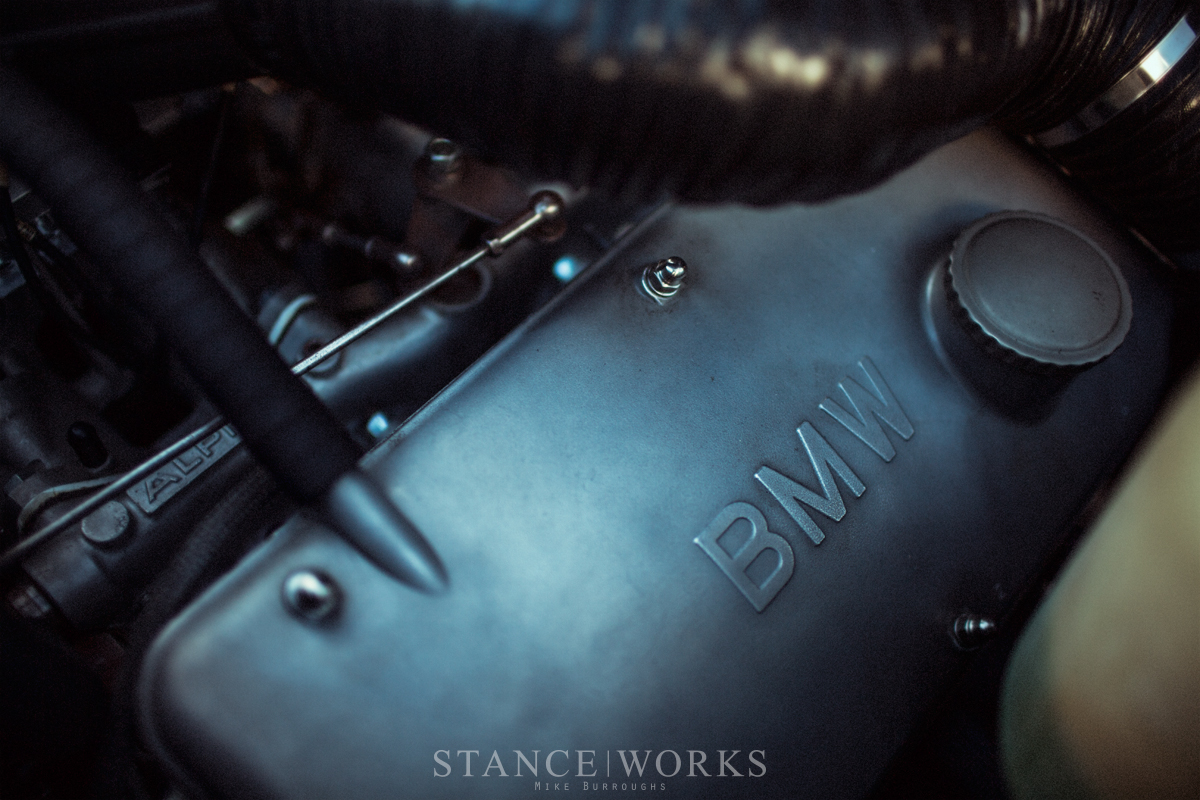
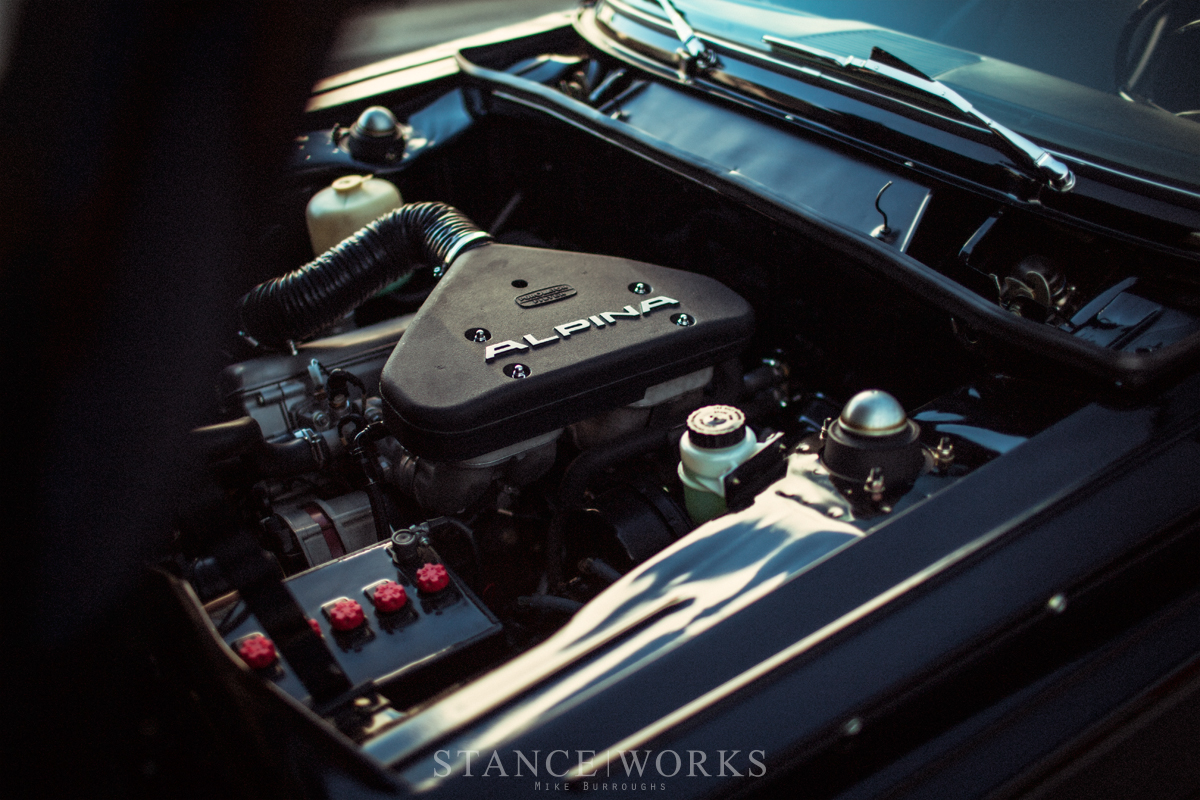
The running gear of the car received a similar treatment. 2002tii front struts with Bilstein HD shocks and NK springs were fitted to the front, and Bilstein shocks with modified springs were fitted to the rear, giving the car its stature. A 24mm ST sway bar mounted under the nose helps keep the front end balanced, and an E9 sway bar out back levels the playing field. While the rear still sports drum brakes behind the ALPINA '69 Lemmer 14x6 steelies, the front wheels hide a set of E21 hubs and E9 calipers - a notable upgrade over stock.

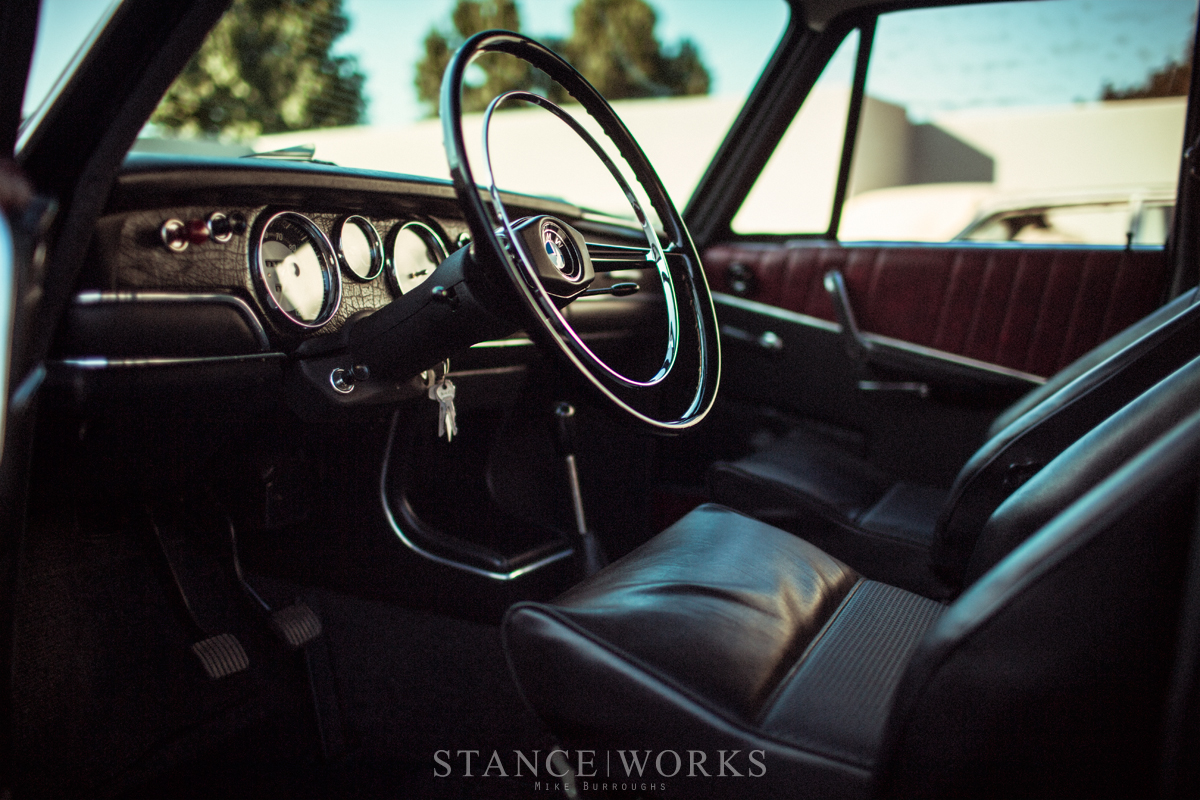
With grippy 205/60/14s on it, the car handles the curves in expert fashion. Inside the car, the original buckets do their best to keep the driver in place as one saws at the enormous factory steering wheel. The gauges lie under a backdated dashboard, paired with a black Elephant skin veneer sourced from a 2002TI. The two-tone oxblood and black interior combo leaves things feelings sporty yet period correct, and pairs perfectly with the otherwise monochromatic exterior.

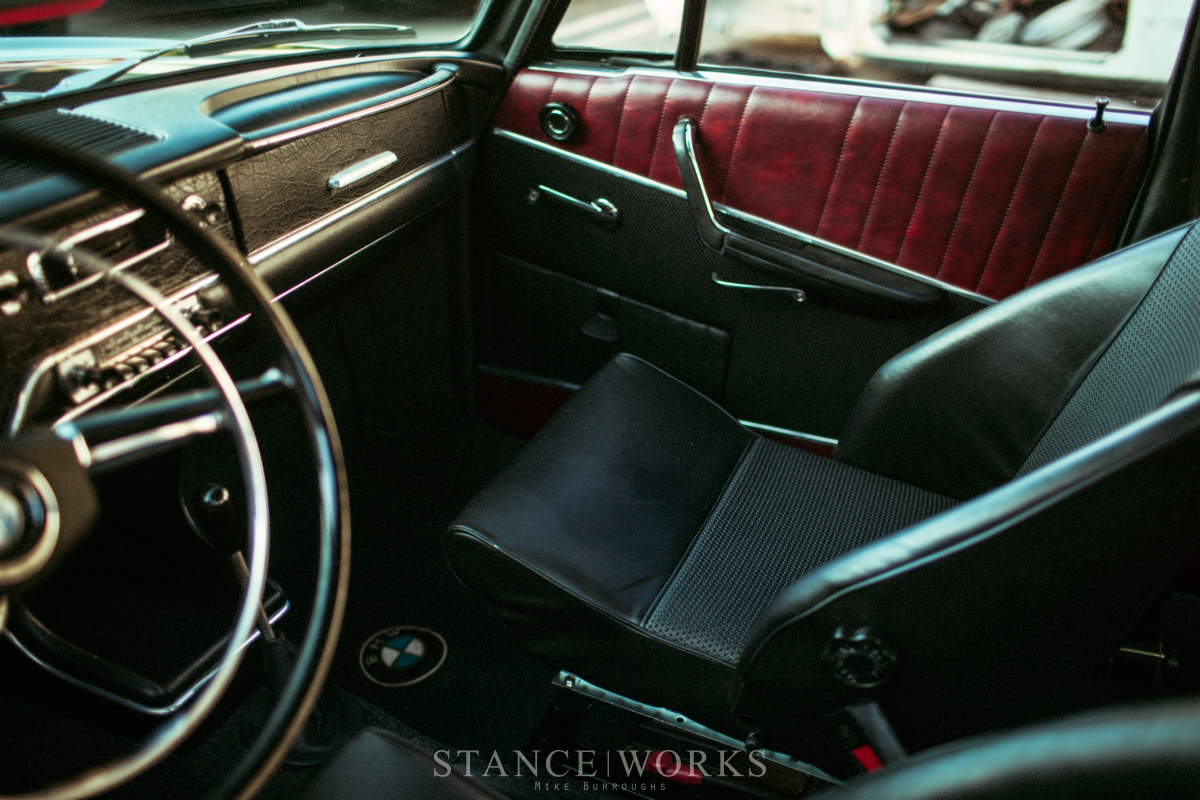

As a whole, The Collector's 1800 straddles the line between tourer and sports sedan, just as the Neue Klasse did upon its conception. If our word carries any weight, we might just suggest that it's perhaps one of the nicest 1800s you're bound to find - clearly built as a labor of love, and assembled with a sincere care for authenticity and improvement. It's a car that is sure to serve as inspiration for many to come, as more and more of these gorgeous classic sedans are brought back to life, just as they revived BMW themselves. Until then...
